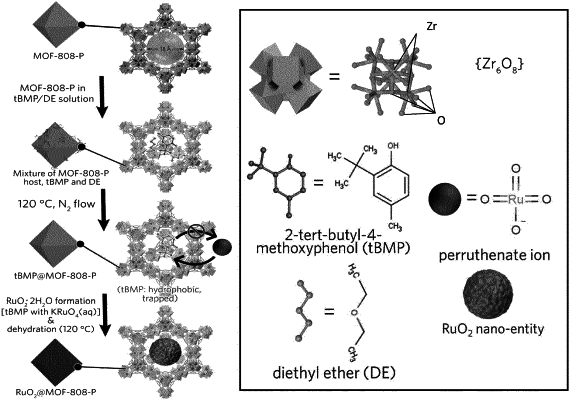| CPC B01J 31/28 (2013.01) [B01J 21/08 (2013.01); B01J 23/462 (2013.01); B01J 31/1691 (2013.01); B01J 35/0013 (2013.01); B01J 35/1057 (2013.01); B01J 35/1061 (2013.01); B01J 37/0205 (2013.01); B01J 37/08 (2013.01); B01J 37/12 (2013.01); B01J 37/16 (2013.01); B01J 2531/005 (2013.01); B01J 2531/0216 (2013.01)] | 13 Claims |

|
1. A method for producing a guest@nanoporous-host material comprising the steps of:
providing a nanoporous host material comprising a plurality of pores interconnected via pore windows;
selecting a target guest species;
identifying a target guest precursor species;
selecting one or more reagents;
infiltrating the nanoporous host material with the one or more reagents form a reagent@nanoporous-host material; and
infiltrating the reagent@nanoporous-host material with the target guest precursor species in a reaction environment such that a reaction occurs to form the target guest species within the pores of the nanoporous host material;
wherein the target guest species is selected on an electrochemical potential versus pH diagram defined by a reaction environment and the target guest precursor species is identified by identifying a phase on the electrochemical potential versus pH diagram;
wherein the one or more reagents comprise
a redox reagent selected to adjust an electrochemical potential of the reaction environment by ΔE, where ΔE is determined as a difference in electrochemical potential operable to change the electrochemical potential of the reaction environment from a stable region of the target guest precursor species on the electrochemical potential versus pH diagram to a stable region of the target guest species on the electrochemical potential versus pH diagram.
|